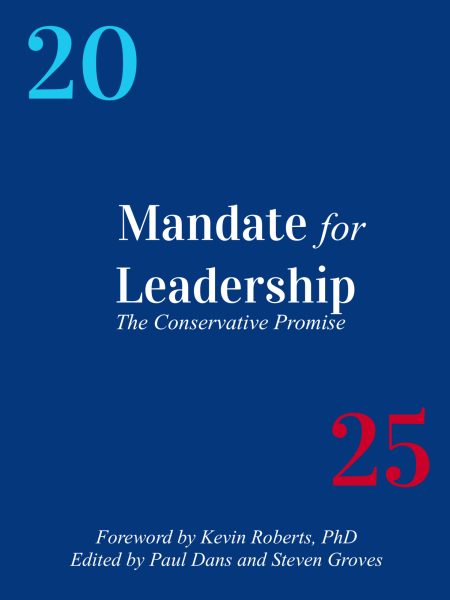Project 2025. A proposed presidential transition project overseen by the Heritage Foundation, a non-profit research institute focused on promoting conservative public policies. Chances are you’ve heard of this initiative if you’ve kept tabs on the upcoming election. However, due to distractions, such as misconstrued information on social media, the terrifying reality of the policies in this 887-page plan is often overlooked.
Project 2025 is based on four pillars: policy, personnel, training and playbook, and is essentially a blueprint for the next Republican presidency. It includes agendas ranging from family planning to climate change. Further, this plan contains legitimate procedures to implement these policies. If former President Donald Trump is re-elected, Project 2025 is set to launch in January 2025 and has become a huge talking point for both major political parties.
According to PBS News, Trump claims to have no connections to Project 2025, despite at least 140 former advisors from the Trump Administration being credited authors of this plan. Consequently, Vice President Kamala Harris has utilized Project 2025 as a warning to voters about what lies in the future if there is a second Trump term. These conflicting viewpoints have made it difficult to determine fact from fiction, so here are five of the policies broken down into what they entail and their impact on the future of our nation.
What it says: “From the moment of conception, every human being possesses inherent dignity and worth (…) our humanity does not depend on our age, stage of development, race, or abilities. The Secretary must ensure that all [Health and Human Services] programs and activities are rooted in a deep respect for innocent human life from day one until natural death: Abortion and euthanasia are not health care” (450).
What it means: According to PBS News, Project 2025 would initiate several restrictions on access to abortion and contraception in the U.S. It states that the Department of Health and Human Services should embody the title of “Department of Life” and reject the idea that abortion is healthcare. It also encourages the Food and Drug Administration to prohibit the use of mifepristone, which is the most common form of abortion in the nation, or at least cut the timeframe of being able to take it from 10 to seven weeks of pregnancy. The plan instructs the Justice Department to enforce the 1873 Comstock Act, which prohibits mailing abortion materials and encourages withholding federal funds from states that don’t report how many abortions are performed to the Center for Disease Control and Prevention. Project 2025 also promotes eliminating Medicaid funds for abortion providers, instructs the Department of Health and Human Services to omit abortion training for doctors and nurses and excludes emergency contraception from no-cost coverage.
What it says: “All Republican Presidents have recognized that public funding of domestic broadcasts is a mistake (…) Conservatives will thus reward a President who eliminates this tyrannical situation. PBS and NPR do not even bother to run programming that would attract conservatives” (246-247).
What it means: According to Brookings, the authors of Project 2025 view current news sources as untrustworthy and over-privileged because they do not appeal to the conservative audience enough. Therefore, the president should cut funding and restrict reporting for outlets they believe do not appeal to right-leaning viewers. This policy would greatly threaten access to reliable news sources for Americans due to the lack of unbiased and transparent journalism.
What it says: “The Secretary of Education should insist that the department serve parents and American ideals, not advocates whose message is that children can choose their own sex, that America is ‘systemically racist,’ that math itself is racist, and that Martin Luther King, Jr.’s ideal of a colorblind society should be rejected in favor of reinstating a color-conscious society (…) Federal education policy should be limited and, ultimately, the federal Department of Education should be eliminated. When power is exercised, it should empower students and families, not government” (286 & 319).
What it means: The U.S. Department of Education states that this federal agency serves as a way to help support education in areas where state and local funding is not enough. Without steady federal support, educational and academic performance would depend on whatever the local and state agencies can provide. By abolishing the Department of Education, schools nationwide would be in financial jeopardy and the quality of students’ education would vary greatly.

What it says: “The next Administration should think about proposing legislation that would ‘effectively abolish’ the Federal Reserve and replace it with ‘free banking,’ whereby ‘neither interest rates nor the supply of money’ would be ‘controlled by government’” (661).
What it means: According to the Federal Reserve Bank of Philadelphia, free banking is when permission from a government body is not required to start a bank. Free banking was prominent in the U.S. during the mid-1800s and ended in 1864 on account of the bank failures that took place during this time. It was determined that a nationwide currency system was necessary to prevent unsound banking processes. By reverting to this practice, customer confidentiality and currency stability would be placed in great danger, thus losing reliability and dependability on our banking system.
What it says: “Climate-change research should be disbanded (…) [The Office of Air and Radiation] is the source of much of [the National Oceanic and Atmospheric Administration’s] climate alarmism” (676).
What it means: The Office of Air and Radiation (OAR) is responsible for passing several environmental laws and programs such as the Clean Air Act and the Atomic Energy Act, as stated by the Environmental Protection Agency. If climate change research was abolished, there would be no way to predict the future state of our environment or to identify what habitats or species would be affected by extreme weather or environmental changes. Cutting climate change research would hold the U.S. back from being able to understand the reality of this global crisis and the necessary actions to curtail it.
Although the future of Project 2025 may be uncertain, especially with the Trump administration’s drastic attempts to distance its campaign from the policies outlined in this document, there is no denying the serious effect it could have on our country. Therefore, as we rapidly approach Nov. 5, it is critical, now more than ever, that young voters educate themselves not only on the candidates themselves but what the future of our nation could look like if they are elected.









